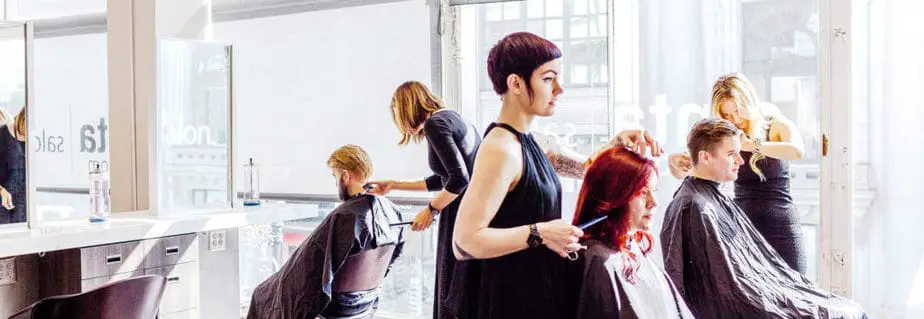Goldwell was founded in 1920 by Hans Erich Dotter. He knew nothing about the hairdressing industry. VISION- “To establish a company whose sole business partners are hairdressers”. Here we discuss Is Goldwell cruelty-free?.

Houston is a key market for Goldwell’s professional hair color and hair care products. Goldwell, founded in 1948 in Germany, is responsible for many of the most innovative products in the beauty industry. Top Chic was Goldwell’s entry into the hair color market in 1971, and its success fueled its expansion into North America. Kao’s salon division owns Tocruelty-free days. Thus, they lead the beauty industry in professional-grade hair color and consumer styling products. Goldwell is also well-known as a top beauty educator. They founded Color Zoom, an annual competition for stylists from all over the world, in addition to amazing regional training.
Kao is the owner of Goldwell. According to the PETA website, Kao is a brand that conducts animal testing.
Is Goldwell cruelty -free?
Goldwell is not a cruelty-free brand because it does direct and indirect animal experimentation.
Animals may be used in the testing of Goldwell’s final products or ingredients. Goldwell may employ a third party to do animal testing. Goldwell’s goods could be sold in places where animal testing is required by law, such as post-market testing or special-use cosmetics. (anti-aging, sun protection, and so on.)Because some of Goldwell’s goods contain animal ingredients or by-products, the company isn’t completely vegan. If a brand’s products do not contain any animal ingredients, by-products, or other animal-derived materials, we consider them to be 100 percent vegan.
Therefore, Goldwell is not a cruelty-free company.
Does Goldwell conduct animal testing?
Nothing could be discovered on their official website, but there is some information on their parent website (Kao) that may be of interest to readers:
We do not and will not conduct animal experimentation in the production of cosmetics, and we do not outsource this duty to anyone. This does not include situations in which we must respond to social expectations to demonstrate a product’s safety or when government bodies in specific nations oblige us to do so.
Our objective is to steer clear of animal testing unless it is impossible to avoid due to a lack of alternative methods, governmental requirements, or other comparable reasons. If animal testing is inevitable, we keep it to a bare minimum, adhering to the 3Rs’ animal welfare standards (Replacement, Reduction, and Refinement).
What does a cruelty-free term mean?
Cruelty-free is a designation used by animal rights activists to identify items and activities that do not injure or kill animals anywhere on the planet. Products tested on animals or made from animals are not considered cruelty-free because animal experimentation is usually painful and results in the suffering and death of millions of animals each year.
On the surface, all products branded “cruelty-free” or “not tested on animals” appear to be good options. Regrettably, this is not always the case. The difficulty is that “cruelty-free” is not a legally defined term, thus it may be used to signify almost anything a company wishes.
How do the animals fare?
Rabbits, rats, mice, and guinea pigs are forced to eat or inhale chemicals every day for 28 or 90 days to see if they have an unfavorable reaction. I hope or have a cosmetic ingredient wiped over their shaved skin, eyes, or ears to see if they have an adverse reaction. The animals are then killed, and their internal organs are examined to see how the substance affects them. Pregnant animals are also subjected to these experiments, and the fetus is terminated after severe pain. Rats have force-fed a cosmetic chemical for two years, then checked for cancer before being killed in extended carcinogen studies.
Products:
Cosmetics, personal care items, household cleansers, apparel, shoes, condoms (which are occasionally manufactured with casein), and candles are just a few examples of cruelty-free products now available (which usually use paraffin or beeswax). Cruelty-free cosmetics are available from Charlotte Tilbury, Urban Decay, Tarte, and Colourpop, to name a few. While it is popular for individuals to use the terms “cruelty-free” and “vegan” interchangeably, there are numerous fundamental differences between the two. Cruelty-free items aren’t usually vegan, and vice versa. The cruelty-free designation merely ensures that the final product and its contents were not tested on animals, but animal-derived ingredients may still be present. Similarly, the vegan label simply ensures that the product does not include animal substances, but it is still possible that it was tested on animals. Many vegans believe that both labels should be read before purchasing a product.
Conclusion:
The larger part of companies does not make their comprehensive animal experimentation protocols available to the public. If a company says they are cruelty-free, they are labeled “cruelty-free.” I hope this article meets your requirements.


